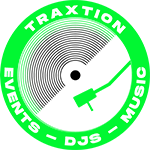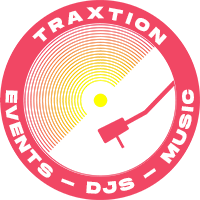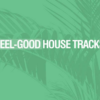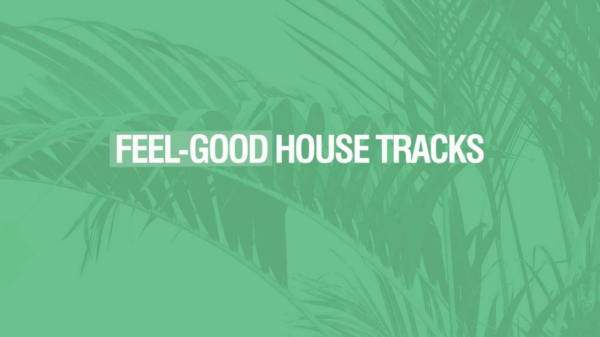MusicRadar is supported by its audience. When you purchase through links on our site, we may earn an affiliate commission. Here’s why you can trust us.
We plunder the Future Music archives to dish up the studio secrets behind 30 classic records from electronic music’s history
Since MusicRadar’s sister magazine Future Music (opens in new tab) first launched itself onto the shelves way back in 1992, we’ve been lucky enough to have the opportunity to sit down with many of modern music’s most exciting and innovative artists.
Whether it’s at the time of their creation or in retrospect, we’ve spent a whole three decades taking you behind the scenes of the making of countless iconic albums.
In order to celebrate this glorious anniversary, we’ve delved into the Future Music archives to bring you a short snapshot of 30 of those must-hear records, as told by the artists themselves and some of their key collaborators.
From the most weirdo of ambient experiments through to modern pop classics, come with us on a journey through three decades of killer electronic music…
Ever one for breaking with convention, Richard D James’ early-career masterpiece was created mostly using an array of modded analogue synths. While the gear used involved a lot of familiar faces, most were circuit bent, sampled and processed to create unique textures.
Richard D James: “The only keyboard that I haven’t changed is the Korg MS-20; I’ve got three of those. It’s a mad keyboard, it’s got a great range of sounds and I like it
the way that it is. A lot of things that I make don’t respond over a keyboard range – they’ll make one sound, which I’ll then sample. Some stuff I control with triggers and control voltages; I put a lot of control on these so that I can alter the sound while they’re being triggered.
“I really hate the idea of using other people’s equipment – I’ve just got a bit obsessed. I don’t want to use pre-programmed drum sounds.
“I’ve used modified 808 sounds on Ambient Works. I’m surprised that the ambient stuff came out as well as it did.
“Someone phoned me up to ask how we got the quality so good; I thought ‘What are they talking about? It’s shit!’”
The second full length from Richie Hawtin and his first as Plastikman, Sheet One is one of the defining works of stripped-back, early-’90s techno.
Richie Hawtin: “My studio for Sheet One was called UTK, which stands for ‘under the kitchen’, as it was at my parent’s house.
“It was the first real studio I had. I had all the Sequential Circuits stuff, my Wavestation, which was all over this record, and all of the Roland stuff. I had my first patchbay – it meant that I could quickly do things. I’d just purchased a very early Allen & Heath GS2 mixer. It was small, but it had a lot of power.
“I had 24 channels and a three-band parametric EQ. I had flanges and delays going all the time. Another big piece of gear was the DP/4, which I always used with at least two effects, sometimes four. I also had the early Yamaha SPX90, which was a bit noisy, but was still quite incredible.”
Jez Willis: “The gear that was used on this album was pretty simple. Most of the bass came off a Korg M1 Pick Bass. Then we used a 909 kick on everything at the time. We kept the drums simple, sampled loads of guitars and stabs and then gated and triggered them. We always used to get a rasping gated sound. We also used all Akai samplers, which have their own sound, and they were always easier to use than the Roland samplers back then, even though they sounded better.
“Most of this album is heavily organic and not that thought about in terms of sonics. Most of the keyboards are Korg related: the strings, the piano… all off the M1 or an O1/W. Then we had an Ensoniq ESQ1 Workstation that was used for some of the sax sounds. We also had a Yamaha TX81Z. It’s got one good sound on it – that was the bassline on Trance Atlantic Glide.”
Brian Dougans: “[Our studio, Earthbeat] was a bit of a NASA studio. We had Moogs and about eight samplers, like the Oberheim – the big long one – and then there were two Akai S3200s, two 1000s, an 1100 and Expander, and then an S900 and an Akai S612.
“Everything was driving through an Atari ST with C-Lab’s Unitor, which was linked up to the ADAT. We had about five extra ports to drive all the synths and samplers. Then we ran all the rackmount stuff like the [Roland] MKS and PG-300 modulators. At points we’d have to sacrifice a MIDI port to get the Roland JX-3P working.”
Massive Attack’s second album saw them expand the minimal setup of their debut album with synths like the Roland JD-800 and a couple of ARP analogue instruments. The Akai S1000 sampler and Yamaha RX7 drum machine were still the core of the band’s sound though.
Mushroom: “Sampling is what we’re all about. Take [title track] Protection, the hi-hat is a one-bar sampled loop, then I programmed some James Brown snares and wah-wah over the top, then added some keyboards. The whole thing was programmed in my home studio. I wrote it as a complete piece of music, without a song in mind, then we sent it off to Tracey [Thorn] and she wrote this incredible song over the top.”
Around the creation of their second album, the IDM icons were toying with MIDI and digital tech – trying and rejecting Cubase in favour of Emagic Creator – but the core of their sound came down to knowing their hardware instruments inside and out.
Sean Booth: “There isn’t one thing about the gear that we’re using now that we don’t understand. The analogue synths are second nature to us, and the [Roland] R-8 is completely our machine.”
More so than the gear itself, Autechre’s classic ’90s sound was built on an approach of heavily manipulating even the most basic sound elements: “We’re into rhythm and sound, basically. In terms of melody, for us it isn’t so much about writing a tune, it’s more about using the sound at different pitches to create a feel. I suppose rhythm is everything to us… The R-8 taught us to experiment with pitch and sounds within rhythm structures. We tend to use notes in a very rhythmic way.”
Trent Reznor: “I was working with 16 tracks of audio and I got the Akai S1100 sampler, so I got stereo samples for the first time. I started using a portable DAT and a stereo microphone in order to go out and record things. My palette had just got much larger.
“I also had the money to put all that equipment into my first proper studio, which meant that I was able to spend much more time on the songs. In fact, what did happen was that the whole demo, writing and recording process all melted into one. I would go into the studio, work on ideas, and those ideas would turn into finished songs. There was no distinction between the demo process and the recording process, as there had been before.”
The 1980s were the decade that originated house, techno and hip-hop, each the product of pioneering black artists in the US taking whatever gear they could get their hands on and pushing it to its limits to generate unheard sounds. As the ’80s rolled into the ’90s, these sounds spread out and fractured, leading the original artist to experiment with new ideas and technical approaches.
Like many electronic artists in the mid-’90s, techno originator Juan Atkins was wary about switching toward digital tech in favour of the classic hardware that built the genre.
Juan Atkins: “The latest thing I got was an Akai 24-channel mixing desk, which I’m just getting into. As far as new developments, there’s not really any [that interest me]… For a while, companies tried to do these all-in-one systems, but somehow it just doesn’t give you the true thing, it’s too consumer-oriented. I’ve got a Mac but I’m mostly using my [Roland] MC-50 – it still does the trick.”
Goldie: “[Timeless] was made in the Moving Shadow HQ, which was [label boss Rob Playford’s] semi-detached in Stevenage. We were using the [Akai] S3200s before anyone else. I’d already managed, with EPs on Reinforced Records, to take care of the Akai S1000s very easily. Then we stepped into the realm of the 3200, and moving into what the Eventide was capable of doing. And also the Oberheim, at the time, along with Vintage Keys.
“In terms of software, MESA files had just come out, so you could cut audio, which no-one was doing at the time. It was groundbreaking when you listen to the drums on something like Sensual. Technically it was a lot of software all having to sync up at the same time. Bastardising the 3200 and scrolling, and having the ability to record the sample window – what people called, ‘the snaking of the track’. That was on-the-fly. We just tried things out.”
At the time of creating their debut, the Chems’ setup was still built around four Akai S-1100s, despite eying up gear from E-Mu and new digital tech.
Tom Rowlands: “I’m so used to Akai. It was the first one I bought, and if you go to different studios, they’re always there, and they’re so easy to use. If everyone’s got them, when you visit different studios, all your samples remain compatible. I realise that, as most of our stuff involves samples, even samples of our own stuff, the amount you can do with it is pretty restrictive when you look at what other samplers can do.
“I just want something more radical. Something where you can fuck around with samples more… We’ve picked up ReCycle. That’s mainly about chopping stuff into small parts and making your own stuff out of it. It will make life a complete ease. I spend so much time chopping up loops and then trying to get stuff I’ve written into grooves from loops. This does it for you. It’ll become a lost art.”
Paul Hartnoll: “We made the album in Strongroom studios, in Shoreditch. Not in their big rooms, though. It was just recorded in a little room.
“In terms of kit, it was a lot of the [E-mu] Emulator III, to start – not the really posh one, the digital one. It’s like an Emax III. There was also a lot of [Roland] 909 going on in there, still. A lot of 808. And then we sampled live drumming from David Gray’s drummer, Craig McClune.
“There would have still been a bit of the [Roland] R-8 and R-70 drum machines. And there was still a lot of [Roland] SH-101 and SH-09. And then the Oberheim Xpander, big time. Then we used the [Roland] Jupiter-6 and the ARP 2600. Oh, and a [Roland] System 100.”
Released five years on from their debut, Experience – which coincidentally, came out at almost the exact same time as the first issue of FM – Prodigy’s breakthrough album saw Liam Howlett’s setup in a state of flux as his studio expanded, but the Roland W-30 workstation remained at the heart of his process.
“I’m so used to the W-30 that I don’t want to move away from it. I know it inside and out. The only downfall is that it’s only got 16 tracks. I get round that by MIDIing two together. I use the W-30s for sampling because of their raw sound quality. I also use the Akais quite a bit. And the Boss SE-70s.
“I’ve got a hard disk in the studio but I mainly just keep things on the desk, and just jam with it… Jam with some loops and fuck around with some effects just to get a vibe going. Problem is, when you work like this you sometimes get stuck in that eight-bar loop.”
A pivotal work of drum & bass from an artist that would go on to remix Bowie and score major Hollywood movies.
Photek: “When I did Modus… I was in St. Albans in Hertfordshire, where I was born and grew up. By then I had enough money to afford three E-MU samplers, from the E-MU E4 series [5000 and 64], which were at the centre of everything. That gave me the grand total of a minute and a half/two minutes of sample time. There was a Mackie 32 track desk, plus I had another 24 channel desk. Then I was using a PC to sequence it running Emagic Logic. I’d just made the switch from Cubase on an Atari.
“My other prized tools were a Lexicon Reverb and a Roland JV-1080. They made up the main body of the stuff I used. I had a few other bits, like an old Proteus and a Sony multi effects box, an MP5. It was like a half white rack unit that not many people had come across at the time, so I had a lot of effects that weren’t in everybody’s toolbox. I also had the Technics decks. If you wanted to reverse sections of your sample, or change the pitch of it, the easiest way was to spin the deck backwards, or move the pitch control.
“You had to construct that process all by hand. I think it was a year after that that hard disc recordings really became the norm.”
Roni Size: “It all started when I got rid of the Studiomaster P7 mixing desk and got in a Mackie. That was the key moment. We’d got that with the advance from Talkin’ Loud. It had just come out. We bought one and I think Andy C and a few others bought one. The sound changed. The kicks really popped, and you began to hear the top end really sing. Now, instead of putting nine different sounds through one output, we could spread stuff across the desk. The Mackie just had that sound. A big desk in a little box.
“We also upgraded from the Roland S-550 to the S-760 sampler. This was at a time when everyone else was using Akai. We were like, ‘No. We’re using the S-760. It’s got the monitor where you can see the sample waveforms and it sounds different.’ We bought four. So we had 32 outputs on the desk, and we had four S-760s so everything was nice.”
Norman Cook: “Most of the album was made during the last hurrah of The House of Love. It was my little spare bedroom, overlooking the train tracks of Preston Park station [in Brighton].
“I was using an Atari ST, an Akai S950, and a coupla synths. Most of the musical stuff came out of a Roland SC-70 SoundCanvas – that was for traditional instruments like pianos. Then I had a Midimoog, which did basslines. Then a 303, naturally. And a 909, 808 and a Moog Prodigy – for the wild stuff.
“A lot of the tunes were 90% from the S950. And halfway through the album I invested in another, as I told myself I was a professional now, and as I was always running out of memory. I only had 48 seconds! If you had a whole track in there you couldn’t get any of the vocals in! Then the turntable was hardwired straight into the sampler.”
Rollo: “The album was put down in a big studio called Swanyard. We’d got it for cheap because Blissy and I were doing big remixes, and the deal was that if we did them there and paid full price, in downtime we could then use it for more personal and non-paying projects.
“They had an SSL setup. I think it was an E-Series. Then it was C-Lab… We also had a Proteus Orchestral, Eventide H3000 and a Roland synth called a JD-800, which we got that famous picked staccato sound from. All of the pads and stuff we got from a big black Roland D-50. Then I had various things like a Roland Juno-60 and a couple of Juno-106s too. The samplers were Akais, like the S-1000. I had a TR-909 drum machine. The Acidy squelches would have come from the Juno. They were used whenever we found we needed anything analogue.
“Every bit of playing that went into that record, from filters to piano playing and the vocals, were all put down on two-inch tape and then they were edited. Very little was being done in the computer. The sequencing ran on the computer. But all the dub effects and stuff like that were done on the desk.”
A genre-bending work of driving dance music, featuring the stone-cold classic The Man With The Red Face. Alongside a Roland V-Drum setup, Clavia nord Lead and Yamaha DX100, Roland’s JD-800 proved a key inspiration to the French techno icon at the turn of the millennium.
Laurent Garnier: “The JD-800 is great! I bought two of them actually, and I still use them all the time. I’ve done a lot of stuff with them which a lot of people didn’t believe I made. On some tracks the bass sound is a JD-800 along with a lot of the strings… I feel it’s very easy to use for somebody who doesn’t want to drown themselves in too much music technology.”
Björk’s fourth album found her at a point of creative transition, following the birth of her daughter. As a result, much of Medúlla was recorded on dictaphones while walking in mountains or caves – an idea inspired by Aphex Twin.
“Basically, it enables you to record layers of vocals while walking outside. I had to use a dictaphone after I had my daughter, because the only thing you can remember is you and the baby. So I had to exercise that muscle with dictaphones until I got my memory back. You can work on an idea and make it better and better, but there’s something very important about the first time you record it, and that usually is the take that stays. If I record something on a dictaphone, I couldn’t record it again.”
Believe it or not, the chart-bothering debut from one of the world’s most successful producers was created in his bedroom on an old-school setup.
Calvin Harris: “All of that first album was recorded on the Amiga. It was all done in my bedroom in Dumfries, before I got any interest from the music business. All I had was the Amiga 1200, the Korg M5 provided loads of sounds for the first album, a huge, 32-channel Soundcraft mixer, my 950 – at some point, that was upgraded to an S3000 – the Alesis compressors, a Line 6 echo-thingy, a Focusrite VoiceMaster Pro and a couple of AKG C1000 mics. That was it!
“The Focusrite was brilliant, because I could really crunch the vocals up and distort them to hell.”
William Bevan, the publicity-shy figure behind the Burial alias, isn’t one for giving regular interviews. His Mercury-nominated album is a fabulous patchwork of samples – drawing on sources as diverse as found sounds, video games and R&B vocals re-pitched to sit in completely different registers – that were apparently pieced together freehand in audio editor Soundforge.
Bevan’s school friend and frequent collaborator Four Tet gave us an insight into his studio processes: “He was a very inspiring person to work with, the fact that he’s put out those records and he’s never used a quantiser, or he’s never put anything on a grid. People flip out about the sound of the Burial records and it’s because he’s not using things that everybody relies on.”
James Murphy: “We went to Longview Farm Studios up in Massachusetts – that’s where Stevie Wonder recorded Songs In The Key Of Life. They’ve got a 40-input Trident A-Range desk that I believe Hunky Dory was done on.
“It’s a beautiful console and a beautiful studio, which we covered in tinfoil, mylar and silver fabrics to make it into a spaceship. The owners came in and were like, ‘What the fuck?’ It looked like a Dr Who set and I had a silver boiler-suit, which made me look kinda funny when I went into town to pick up food.
“We used the Trident and I used Logic on a Mac. But we only used it for recording and editing – we don’t use it for any sound treatment.”
A seminal work bridging the gaps between New York indie and electronic music, MPP saw the four-piece pushing themselves in the studio more than ever before.
Avey Tare: “In the past, all we wanted the studio for was to capture the songs and the vibe we already had. This time though, there was a little bit more production happening when we were in the studio. There were a couple of things that we were able to come up with because of what they had there – cool ways to mic and layer drums, which wasn’t anything we had planned before we went in.”
Geologist: “Ben [Allen], the engineer, was really good at finding the right EQ and sound for each of the parts. He was really good at anticipating the production, especially for percussion.”
Panda Bear: “[The Sweet Tea studio in Oxford, Mississipi] had this huge metal wall that was in a storage area and it sounded cool. A lot of the reverb on the album is actually from that hallway, especially percussion.”
Nik Roos: “We made the album with the latest version of Cubase on a Windows 7 PC with a dual screen setup. Adam S3A speakers provided the sound and we also had an SPL 2Control monitor controller. We also had a Terratec TMP1, Korg N5, SV-1 and M50. Then the Access Virus TI, Adam Sub12 and a Neumann TLM102 microphone to record vocals. We used serious amounts of iZotope Trash, Superior Drummer 2 for drums, and other bits like Sylenth, Albino, Waves NLS, and some FabFilter, Sonnox and Softube bundles.”
A turning point between his earlier, folk-tinged sound and more dancefloor-focused work, Kieran Hebden’s 2010 album saw him pushing the capabilities of his software setup.
“It’s a very digital project and it feels natural for me to keep it in the computer and use plugins for EQ and stuff like that. On the Four Tet records, one of the concepts that gives it its sound is that it’s all in-the-box. It’s not about budget, circumstances or efficiency – it just allows me to make the music in a creative way. I usually don’t think about the mixing while working on things, it just kind of happens as I go.
“There is [some live instrumentation] but even when I record something in, I won’t try and perform a perfect take, sometimes I won’t even have the track on. I’ll just record a bunch of sounds from a keyboard or a guitar and manipulate that to fit with the track I’ve got. It’s about wanting it to become an edited, sequence-type sound rather than human performance.
“If I sat down with a guitar and started soloing over things, I’d never get anything done that hadn’t been done before – the guitar is such an explored instrument. But if I record small parts and try to manipulate them to fit with the track – pitching it, stretching it, slowing it down, speeding it up – I forget that it’s guitar. It just becomes sound.”
One of the standout releases of the ‘post-dubstep’ wave, Mount Kimbie’s debut saw the duo combining found sounds and sampled beats in Logic and FL Studio.
Dominic Maker: “Around two months into making the album we went down to a sort of wind-tunnel which is about 200 metres from my front door. It’s basically a tunnel running underneath a road and at the other end is the sea. It’s got this amazing natural reverb, I think it resonates at a G, just a really unique sound. We went there with three microphones and we sung down there, threw stones at the wall and recorded loads of claps.
“There are two songs on the album, Adriatic and Tunnel Vision, which are mostly made out of samples from that tunnel.”
Axel Willner: “The album was done in different stages. Firstly, I did all the sketches at my home studio [in Berlin]. And then I packed up the car and drove down to Cologne to my friend’s place, Dumbo Studios. Then the two guys [band members Jesper Skarin and Dan Enqvist] flew in from Stockholm. That’s when we started to live jam and arrange on the spot.
“I had the [Elektron] Octatrack, which had just come out – I had a beta version. Then an [Akai] MPC. And there was also some tracks that I had recorded in [Jeskola] Buzz, this old tracker program.
“We also used Machinedrum, a Roland SH-101, a JX-3P, and a Yamaha CS01. And we also had a Minimoog Voyager. And, because we were in a recording room in the studio they had quite a lot of instruments. So, we had a piano, a vibraphone, and a double bass. This stuff was just lying around. Jesper was also using an acoustic drum kit, and Dan Enqvist had a Höfner President and a Fender Jazz Bass.”
Jon Hopkins: “I’ve basically got a MacBook Pro running so I can open Sound Forge and work on sounds simultaneously in Logic. That’s the key setup that allows me to marry the sort of programming I used to do with the better-quality sequencing power of Logic.
“I’ve got an Apogee Ensemble, which is how I record all the live stuff, and I use a preamp Heritage Audio DMA-73 dual microphone to record the piano. I’ve got an Eventide DSP 4000 Ultra-Harmoniser and a cassette deck, which I use quite a lot for re-recording sounds in.
“For synths, I have the Korg Trinity Pro and a CasioTone 101. I also have a Roland SH-09 and a Korg MS-20, which is the newest one, and it’s all over the album.”
Claire Boucher: “The core of the studio is my computer and an Apogee Duet USB interface, which doubles with whatever mic I’m using at the time. Sample packs are important; I’ve been building my own and getting good drum sounds that I love, and I also usually use a synth or a guitar.
“I love the Nexus VST and Native Instruments’ Massive, and I really like using iZotope Ozone for sending people demos. I ‘mastered’ the album with Ozone, although obviously I got it professionally mastered in the end. I love the Waves plugins too, especially the Manny Marroquin reverbs, which I really like for doing vocals. I used iZotope Nectar on a couple of vocal tracks too, but it crashes a lot.”
One of the most innovative producers of their generation, Scottish-born SOPHIE sadly died in a tragic accident in early 2021.
Around the same time, collaborator Jimmy Edgar let us in on some of SOPHIE’s innovative tricks: “We both use the Elektron equipment very heavily so we were sharing techniques for that and exchanging Sysex. SOPHIE really started to explore Karplus-Strong string synthesis in the Elektron world and it inspired me to get into that too, mostly to emulate sounds of real life. [SOPHIE used] a technique called slip-stick. This is the synthesis that you use for physical objects that bend and resonate different materials.”
Dan Snaith: “A lot of the guitars on the album are Omnisphere, and the piano as well. As for sampling, there’s a lot of individual sampled hits but there are also tracks on there that have whole loops of other tracks within them.
“The one big synth on the record is actually something I made. It’s exactly what you shouldn’t do with a modular synth – try and make a polysynth out of it. I used my modular gear and Reaktor Blocks and I designed this software/hardware hybrid thing. It has four wavetable oscillators routed into four filters… I ended up getting its four voices doing independent things.
“For example, if you send a Quadrature LFO that modulates the wavetable position of each of the four oscillators, you can hold down a chord with four voices, and they’ll all be at different points in the wavetable.”
Future Music is the number one magazine for today’s producers. Packed with technique and technology we’ll help you make great new music. All-access artist interviews, in-depth gear reviews, essential production tutorials and much more. Every marvellous monthly edition features reliable reviews of the latest and greatest hardware and software technology and techniques, unparalleled advice, in-depth interviews, sensational free samples and so much more to improve the experience and outcome of your music-making.
Want to start DJing? Pioneer DJ says that its DDJ-FLX4 controller makes it easy to learn
Waves Harmony review
Unholy moly: Soundation has remade Sam Smith and Kim Petras’s huge hit in its online DAW
Don’t miss the latest deals, news, reviews, features and tutorials
Thank you for signing up to Musicradar. You will receive a verification email shortly.
There was a problem. Please refresh the page and try again.
MusicRadar is part of Future plc, an international media group and leading digital publisher. Visit our corporate site (opens in new tab).
© Future Publishing Limited Quay House, The Ambury, Bath BA1 1UA. All rights reserved. England and Wales company registration number 2008885.







